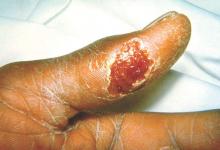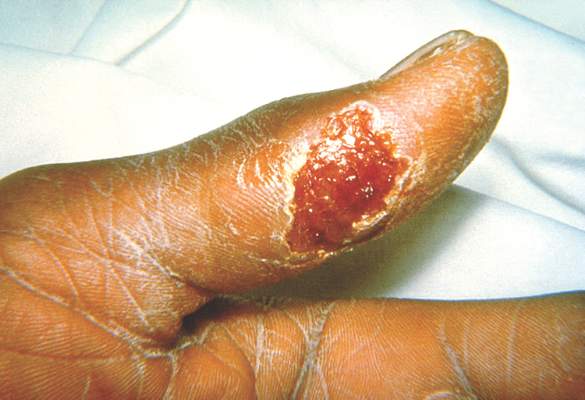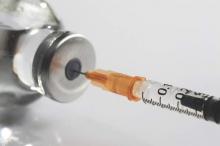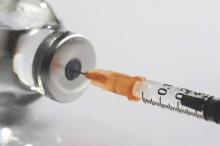User login
Schizophrenia patients underestimate memory performance
Schizophrenia patients may underestimate their memory performance, according to a study conducted by Chien-Yeh Chiu of National Taiwan University in Taipei and colleagues.
Researchers assessed Feeling-of-Knowing (FOK) ability of 40 schizophrenia patients and 40 demographically matched normal controls through a recall-judgment-recognition task involving common Chinese word pairs. In a learning phase, participants were presented with 26 word pairs and told they would be asked to recall the target words later.
In a second phase, participants were asked to recall the target words and assess their FOK judgments. In a third phase, participants were presented with 20 targets and 20 distracters, and were asked to recognize whether each word had been learned in the learning phase. Researchers measured FOK accuracy by estimating the association between FOK judgment and correctness of recognition.
Schizophrenia patients as a group had less FOK than their normal counterparts, but their FOK ability varied, with 42.5% of patients exhibiting a below chance level performance. Patient self-reports of cognitive capacity should be treated “with caution,” the authors noted.
“Because patients with schizophrenia tend to underestimate their performance in upcoming memory tasks, they are more likely to prematurely terminate their memory searches,” they wrote. “Cognitive remediation programs to counteract this tendency may improve memory function, and routine neuropsychological assessment, including evaluation of metamemory function, should be helpful.”
Read the article in Psychiatry Research (http://dx.doi.org/10.1016/j.psychres.2015.09.046).
Schizophrenia patients may underestimate their memory performance, according to a study conducted by Chien-Yeh Chiu of National Taiwan University in Taipei and colleagues.
Researchers assessed Feeling-of-Knowing (FOK) ability of 40 schizophrenia patients and 40 demographically matched normal controls through a recall-judgment-recognition task involving common Chinese word pairs. In a learning phase, participants were presented with 26 word pairs and told they would be asked to recall the target words later.
In a second phase, participants were asked to recall the target words and assess their FOK judgments. In a third phase, participants were presented with 20 targets and 20 distracters, and were asked to recognize whether each word had been learned in the learning phase. Researchers measured FOK accuracy by estimating the association between FOK judgment and correctness of recognition.
Schizophrenia patients as a group had less FOK than their normal counterparts, but their FOK ability varied, with 42.5% of patients exhibiting a below chance level performance. Patient self-reports of cognitive capacity should be treated “with caution,” the authors noted.
“Because patients with schizophrenia tend to underestimate their performance in upcoming memory tasks, they are more likely to prematurely terminate their memory searches,” they wrote. “Cognitive remediation programs to counteract this tendency may improve memory function, and routine neuropsychological assessment, including evaluation of metamemory function, should be helpful.”
Read the article in Psychiatry Research (http://dx.doi.org/10.1016/j.psychres.2015.09.046).
Schizophrenia patients may underestimate their memory performance, according to a study conducted by Chien-Yeh Chiu of National Taiwan University in Taipei and colleagues.
Researchers assessed Feeling-of-Knowing (FOK) ability of 40 schizophrenia patients and 40 demographically matched normal controls through a recall-judgment-recognition task involving common Chinese word pairs. In a learning phase, participants were presented with 26 word pairs and told they would be asked to recall the target words later.
In a second phase, participants were asked to recall the target words and assess their FOK judgments. In a third phase, participants were presented with 20 targets and 20 distracters, and were asked to recognize whether each word had been learned in the learning phase. Researchers measured FOK accuracy by estimating the association between FOK judgment and correctness of recognition.
Schizophrenia patients as a group had less FOK than their normal counterparts, but their FOK ability varied, with 42.5% of patients exhibiting a below chance level performance. Patient self-reports of cognitive capacity should be treated “with caution,” the authors noted.
“Because patients with schizophrenia tend to underestimate their performance in upcoming memory tasks, they are more likely to prematurely terminate their memory searches,” they wrote. “Cognitive remediation programs to counteract this tendency may improve memory function, and routine neuropsychological assessment, including evaluation of metamemory function, should be helpful.”
Read the article in Psychiatry Research (http://dx.doi.org/10.1016/j.psychres.2015.09.046).
FROM PSYCHIATRY RESEARCH
Antipsychotic polytherapy tied to akathisia
Antipsychotic polytherapy might be associated with a higher risk of akathisia among patients with schizophrenia, according to a study published by Dr. Fabrice Berna of the University Hospital of Strasbourg (France) and his colleagues with the FondaMental Academic Centers of Expertise for Schizophrenia group.
Researchers followed 372 community-dwelling patients with schizophrenia (n = 291) or schizoaffective disorder (n = 81) and measured akathisia using the 6-point Barnes Akathisia Scale (BAS).
The global prevalence of akathisia (defined by a score of 2 or higher on the BAS) among these patients was 18.5% (58 of 372). Polytherapy with two first-generation antipsychotics was associated with a twofold increase of akathisia, compared with monotherapy with a first-generation antipsychotic (21.4% vs. 40%). Polytherapy with two second-generation antipsychotics was associated with a threefold increase of akathisia, compared with monotherapy with a second-generation antipsychotic (10.9% vs. 34.2%). Polytherapy with a first- and second-generation antipsychotic was associated with an akathisia prevalence of 14.7%.
“Our results indicate that antipsychotic polytherapy should be at best avoided and suggest that monotherapy should be recommended in cases of akathisia,” the authors wrote. “Long-term administration of benzodiazepines or anticholinergic drugs does not seem to be advisable in cases of akathisia, given the potential side effects of these medications.”
Read the article in Schizophrenia Research (doi: 10/1016/j/schres.2015.10/040).
Antipsychotic polytherapy might be associated with a higher risk of akathisia among patients with schizophrenia, according to a study published by Dr. Fabrice Berna of the University Hospital of Strasbourg (France) and his colleagues with the FondaMental Academic Centers of Expertise for Schizophrenia group.
Researchers followed 372 community-dwelling patients with schizophrenia (n = 291) or schizoaffective disorder (n = 81) and measured akathisia using the 6-point Barnes Akathisia Scale (BAS).
The global prevalence of akathisia (defined by a score of 2 or higher on the BAS) among these patients was 18.5% (58 of 372). Polytherapy with two first-generation antipsychotics was associated with a twofold increase of akathisia, compared with monotherapy with a first-generation antipsychotic (21.4% vs. 40%). Polytherapy with two second-generation antipsychotics was associated with a threefold increase of akathisia, compared with monotherapy with a second-generation antipsychotic (10.9% vs. 34.2%). Polytherapy with a first- and second-generation antipsychotic was associated with an akathisia prevalence of 14.7%.
“Our results indicate that antipsychotic polytherapy should be at best avoided and suggest that monotherapy should be recommended in cases of akathisia,” the authors wrote. “Long-term administration of benzodiazepines or anticholinergic drugs does not seem to be advisable in cases of akathisia, given the potential side effects of these medications.”
Read the article in Schizophrenia Research (doi: 10/1016/j/schres.2015.10/040).
Antipsychotic polytherapy might be associated with a higher risk of akathisia among patients with schizophrenia, according to a study published by Dr. Fabrice Berna of the University Hospital of Strasbourg (France) and his colleagues with the FondaMental Academic Centers of Expertise for Schizophrenia group.
Researchers followed 372 community-dwelling patients with schizophrenia (n = 291) or schizoaffective disorder (n = 81) and measured akathisia using the 6-point Barnes Akathisia Scale (BAS).
The global prevalence of akathisia (defined by a score of 2 or higher on the BAS) among these patients was 18.5% (58 of 372). Polytherapy with two first-generation antipsychotics was associated with a twofold increase of akathisia, compared with monotherapy with a first-generation antipsychotic (21.4% vs. 40%). Polytherapy with two second-generation antipsychotics was associated with a threefold increase of akathisia, compared with monotherapy with a second-generation antipsychotic (10.9% vs. 34.2%). Polytherapy with a first- and second-generation antipsychotic was associated with an akathisia prevalence of 14.7%.
“Our results indicate that antipsychotic polytherapy should be at best avoided and suggest that monotherapy should be recommended in cases of akathisia,” the authors wrote. “Long-term administration of benzodiazepines or anticholinergic drugs does not seem to be advisable in cases of akathisia, given the potential side effects of these medications.”
Read the article in Schizophrenia Research (doi: 10/1016/j/schres.2015.10/040).
FROM SCHIZOPHRENIA RESEARCH
Pneumococcal serotypes likely to cause invasive disease dropped after PCV13 introduced
The number of pneumococcal serotypes with high potential for causing invasive disease decreased in France after the introduction of the 13-valent pneumococcal conjugate vaccine (PCV13), according to a study published in Vaccine by Dr. Emmanuelle Varon of the Hospital Européen Georges Pompidou in Paris and her colleagues.
Only two nonvaccine serotypes, 24F and 12F, had a high invasive disease potential in children under the age of 2 years after PCV13 was made available in 2010, researchers found. This is a decrease from five serotypes – 7F, 3, 1, 24F and 19A – previously known to have had a high invasive disease potential, when children were offered a seven-valent vaccine (PCV7).
During two study periods, 2008-2009 (before PCV13) and 2012-2013 (after PCV13), researchers looked at 355 pneumococci isolated from 1,212 healthy children aged 6-24 months and from 569 children with invasive pneumococcal disease (IPD), including 166 with meningitis, 114 with pneumonia, and 289 with other IPDs. During the second study period, the number of pneumococcal isolates was reduced for overall IPD (53%), meningitis (37%), pneumonia (66%), and other IPDs (56%). PCV7 serotypes almost disappeared between the two time frames.
Ongoing surveys are needed “to further characterize the little-known [nonvaccine serotypes], which are still poorly represented,” the authors wrote.
Read the article in Vaccine (doi: 10.1016/j.vaccine.2015.10.015).
The number of pneumococcal serotypes with high potential for causing invasive disease decreased in France after the introduction of the 13-valent pneumococcal conjugate vaccine (PCV13), according to a study published in Vaccine by Dr. Emmanuelle Varon of the Hospital Européen Georges Pompidou in Paris and her colleagues.
Only two nonvaccine serotypes, 24F and 12F, had a high invasive disease potential in children under the age of 2 years after PCV13 was made available in 2010, researchers found. This is a decrease from five serotypes – 7F, 3, 1, 24F and 19A – previously known to have had a high invasive disease potential, when children were offered a seven-valent vaccine (PCV7).
During two study periods, 2008-2009 (before PCV13) and 2012-2013 (after PCV13), researchers looked at 355 pneumococci isolated from 1,212 healthy children aged 6-24 months and from 569 children with invasive pneumococcal disease (IPD), including 166 with meningitis, 114 with pneumonia, and 289 with other IPDs. During the second study period, the number of pneumococcal isolates was reduced for overall IPD (53%), meningitis (37%), pneumonia (66%), and other IPDs (56%). PCV7 serotypes almost disappeared between the two time frames.
Ongoing surveys are needed “to further characterize the little-known [nonvaccine serotypes], which are still poorly represented,” the authors wrote.
Read the article in Vaccine (doi: 10.1016/j.vaccine.2015.10.015).
The number of pneumococcal serotypes with high potential for causing invasive disease decreased in France after the introduction of the 13-valent pneumococcal conjugate vaccine (PCV13), according to a study published in Vaccine by Dr. Emmanuelle Varon of the Hospital Européen Georges Pompidou in Paris and her colleagues.
Only two nonvaccine serotypes, 24F and 12F, had a high invasive disease potential in children under the age of 2 years after PCV13 was made available in 2010, researchers found. This is a decrease from five serotypes – 7F, 3, 1, 24F and 19A – previously known to have had a high invasive disease potential, when children were offered a seven-valent vaccine (PCV7).
During two study periods, 2008-2009 (before PCV13) and 2012-2013 (after PCV13), researchers looked at 355 pneumococci isolated from 1,212 healthy children aged 6-24 months and from 569 children with invasive pneumococcal disease (IPD), including 166 with meningitis, 114 with pneumonia, and 289 with other IPDs. During the second study period, the number of pneumococcal isolates was reduced for overall IPD (53%), meningitis (37%), pneumonia (66%), and other IPDs (56%). PCV7 serotypes almost disappeared between the two time frames.
Ongoing surveys are needed “to further characterize the little-known [nonvaccine serotypes], which are still poorly represented,” the authors wrote.
Read the article in Vaccine (doi: 10.1016/j.vaccine.2015.10.015).
FROM VACCINE
Tularemia outbreak in four U.S. states
One hundred cases of tularemia have been reported in 2015 among residents of Colorado, Nebraska, South Dakota, and Wyoming, according to a report by the U.S. Centers for Disease Control and Prevention. This represents a substantial increase in the annual mean number of cases (2 to 7) reported in each of these states during the past decade.
Although the cause for the increase in cases is unclear, Dr. Caitlin Pedati of the CDC’s Epidemic Intelligence Service and colleagues wrote in the Dec. 4 issue of Morbidity and Mortality Weekly Report that possible factors include increased rainfall promoting vegetation growth, pathogen survival, increased rodent and rabbit populations, and increased disease awareness (MMWR. 2015 Dec 4;64[47]:1317-8).
The infected patients ranged in age from 10 months to 89 years, and most commonly presented with the pneumonic form of respiratory disease, skin lesions with lymphadenopathy, and a general febrile illness without localizing signs. A total of 48 people were hospitalized and one died. Possible exposure routes included animal contact, environmental aerosolizing activities, and arthropod bites.
Clinical disease signs of tularemia could include fever and chills with muscle and joint pain, cough or difficulty breathing, swollen lymph nodes with or without skin lesions, conjunctivitis, pharyngitis, or abdominal pain with vomiting and diarrhea, the authors noted. Case fatality rates range from <2% to 24%, depending on the strain. Streptomycin is considered the drug of choice for treatment.
“Health care providers should be aware of the elevated risk for tularemia within these states and consider a diagnosis of tularemia in any person nationwide with compatible signs and symptoms,” wrote Dr. Pedati and colleagues.
Read the full article in Morbidity and Mortality Weekly Report.
One hundred cases of tularemia have been reported in 2015 among residents of Colorado, Nebraska, South Dakota, and Wyoming, according to a report by the U.S. Centers for Disease Control and Prevention. This represents a substantial increase in the annual mean number of cases (2 to 7) reported in each of these states during the past decade.
Although the cause for the increase in cases is unclear, Dr. Caitlin Pedati of the CDC’s Epidemic Intelligence Service and colleagues wrote in the Dec. 4 issue of Morbidity and Mortality Weekly Report that possible factors include increased rainfall promoting vegetation growth, pathogen survival, increased rodent and rabbit populations, and increased disease awareness (MMWR. 2015 Dec 4;64[47]:1317-8).
The infected patients ranged in age from 10 months to 89 years, and most commonly presented with the pneumonic form of respiratory disease, skin lesions with lymphadenopathy, and a general febrile illness without localizing signs. A total of 48 people were hospitalized and one died. Possible exposure routes included animal contact, environmental aerosolizing activities, and arthropod bites.
Clinical disease signs of tularemia could include fever and chills with muscle and joint pain, cough or difficulty breathing, swollen lymph nodes with or without skin lesions, conjunctivitis, pharyngitis, or abdominal pain with vomiting and diarrhea, the authors noted. Case fatality rates range from <2% to 24%, depending on the strain. Streptomycin is considered the drug of choice for treatment.
“Health care providers should be aware of the elevated risk for tularemia within these states and consider a diagnosis of tularemia in any person nationwide with compatible signs and symptoms,” wrote Dr. Pedati and colleagues.
Read the full article in Morbidity and Mortality Weekly Report.
One hundred cases of tularemia have been reported in 2015 among residents of Colorado, Nebraska, South Dakota, and Wyoming, according to a report by the U.S. Centers for Disease Control and Prevention. This represents a substantial increase in the annual mean number of cases (2 to 7) reported in each of these states during the past decade.
Although the cause for the increase in cases is unclear, Dr. Caitlin Pedati of the CDC’s Epidemic Intelligence Service and colleagues wrote in the Dec. 4 issue of Morbidity and Mortality Weekly Report that possible factors include increased rainfall promoting vegetation growth, pathogen survival, increased rodent and rabbit populations, and increased disease awareness (MMWR. 2015 Dec 4;64[47]:1317-8).
The infected patients ranged in age from 10 months to 89 years, and most commonly presented with the pneumonic form of respiratory disease, skin lesions with lymphadenopathy, and a general febrile illness without localizing signs. A total of 48 people were hospitalized and one died. Possible exposure routes included animal contact, environmental aerosolizing activities, and arthropod bites.
Clinical disease signs of tularemia could include fever and chills with muscle and joint pain, cough or difficulty breathing, swollen lymph nodes with or without skin lesions, conjunctivitis, pharyngitis, or abdominal pain with vomiting and diarrhea, the authors noted. Case fatality rates range from <2% to 24%, depending on the strain. Streptomycin is considered the drug of choice for treatment.
“Health care providers should be aware of the elevated risk for tularemia within these states and consider a diagnosis of tularemia in any person nationwide with compatible signs and symptoms,” wrote Dr. Pedati and colleagues.
Read the full article in Morbidity and Mortality Weekly Report.
FROM MORBIDITY AND MORTALITY WEEKLY REPORT
Pro-vaccine Community Outreach Campaign Appears Successful in Australia
A pro-vaccine community outreach campaign that uses local advocates and taps into common values can change attitudes among some people who traditionally doubt or refuse vaccines, according to a study published in Vaccine by Katie Attwell and Melanie Freeman of Murdoch University in Perth and of the Immunisation Alliance of Western Australia.
The “I immunise” campaign, conducted in 2014 in Freemantle, Western Australia, featured pro-vaccine testimonials from six community advocates on a website; posters uploaded to the campaign’s Facebook page and distributed to doctors’ offices, child health clinics, child care centers, playgroups, and private businesses; and billboards or large signs displayed on public buildings. Freemantle is one of the country’s lowest areas for vaccination coverage and has a prominent alternative lifestyle community.
In an online survey of 304 local residents (93 adhering to an alternative lifestyle and 211 following a traditional lifestyle) after the launch of the campaign, results showed that the campaign had polarized attitudes toward vaccination and led some (17%) to feel more negatively. However, it had an overall positive effect for at least 77%, including a third of responders who previously had refused or doubted vaccines. Some parents who responded positively said they would update their own vaccinations, share the campaign on their Facebook pages, or keep their children away from those who were not immunized.
The fact that the campaign had a positive impact on at least three-quarters of the target group “suggests that it has value as one type of influencing tool,” the authors wrote. But “more research is required into how [anti-vaccine] attitudes develop and how communities, governments, and health professionals can effectively challenge them.”
Read the article in Vaccine (2015 Nov 17;33[46]:6235-40).
A pro-vaccine community outreach campaign that uses local advocates and taps into common values can change attitudes among some people who traditionally doubt or refuse vaccines, according to a study published in Vaccine by Katie Attwell and Melanie Freeman of Murdoch University in Perth and of the Immunisation Alliance of Western Australia.
The “I immunise” campaign, conducted in 2014 in Freemantle, Western Australia, featured pro-vaccine testimonials from six community advocates on a website; posters uploaded to the campaign’s Facebook page and distributed to doctors’ offices, child health clinics, child care centers, playgroups, and private businesses; and billboards or large signs displayed on public buildings. Freemantle is one of the country’s lowest areas for vaccination coverage and has a prominent alternative lifestyle community.
In an online survey of 304 local residents (93 adhering to an alternative lifestyle and 211 following a traditional lifestyle) after the launch of the campaign, results showed that the campaign had polarized attitudes toward vaccination and led some (17%) to feel more negatively. However, it had an overall positive effect for at least 77%, including a third of responders who previously had refused or doubted vaccines. Some parents who responded positively said they would update their own vaccinations, share the campaign on their Facebook pages, or keep their children away from those who were not immunized.
The fact that the campaign had a positive impact on at least three-quarters of the target group “suggests that it has value as one type of influencing tool,” the authors wrote. But “more research is required into how [anti-vaccine] attitudes develop and how communities, governments, and health professionals can effectively challenge them.”
Read the article in Vaccine (2015 Nov 17;33[46]:6235-40).
A pro-vaccine community outreach campaign that uses local advocates and taps into common values can change attitudes among some people who traditionally doubt or refuse vaccines, according to a study published in Vaccine by Katie Attwell and Melanie Freeman of Murdoch University in Perth and of the Immunisation Alliance of Western Australia.
The “I immunise” campaign, conducted in 2014 in Freemantle, Western Australia, featured pro-vaccine testimonials from six community advocates on a website; posters uploaded to the campaign’s Facebook page and distributed to doctors’ offices, child health clinics, child care centers, playgroups, and private businesses; and billboards or large signs displayed on public buildings. Freemantle is one of the country’s lowest areas for vaccination coverage and has a prominent alternative lifestyle community.
In an online survey of 304 local residents (93 adhering to an alternative lifestyle and 211 following a traditional lifestyle) after the launch of the campaign, results showed that the campaign had polarized attitudes toward vaccination and led some (17%) to feel more negatively. However, it had an overall positive effect for at least 77%, including a third of responders who previously had refused or doubted vaccines. Some parents who responded positively said they would update their own vaccinations, share the campaign on their Facebook pages, or keep their children away from those who were not immunized.
The fact that the campaign had a positive impact on at least three-quarters of the target group “suggests that it has value as one type of influencing tool,” the authors wrote. But “more research is required into how [anti-vaccine] attitudes develop and how communities, governments, and health professionals can effectively challenge them.”
Read the article in Vaccine (2015 Nov 17;33[46]:6235-40).
FROM VACCINE
Pro-vaccine community outreach campaign appears successful in Australia
A pro-vaccine community outreach campaign that uses local advocates and taps into common values can change attitudes among some people who traditionally doubt or refuse vaccines, according to a study published in Vaccine by Katie Attwell and Melanie Freeman of Murdoch University in Perth and of the Immunisation Alliance of Western Australia.
The “I immunise” campaign, conducted in 2014 in Freemantle, Western Australia, featured pro-vaccine testimonials from six community advocates on a website; posters uploaded to the campaign’s Facebook page and distributed to doctors’ offices, child health clinics, child care centers, playgroups, and private businesses; and billboards or large signs displayed on public buildings. Freemantle is one of the country’s lowest areas for vaccination coverage and has a prominent alternative lifestyle community.
In an online survey of 304 local residents (93 adhering to an alternative lifestyle and 211 following a traditional lifestyle) after the launch of the campaign, results showed that the campaign had polarized attitudes toward vaccination and led some (17%) to feel more negatively. However, it had an overall positive effect for at least 77%, including a third of responders who previously had refused or doubted vaccines. Some parents who responded positively said they would update their own vaccinations, share the campaign on their Facebook pages, or keep their children away from those who were not immunized.
The fact that the campaign had a positive impact on at least three-quarters of the target group “suggests that it has value as one type of influencing tool,” the authors wrote. But “more research is required into how [anti-vaccine] attitudes develop and how communities, governments, and health professionals can effectively challenge them.”
Read the article in Vaccine (2015 Nov 17;33[46]:6235-40).
A pro-vaccine community outreach campaign that uses local advocates and taps into common values can change attitudes among some people who traditionally doubt or refuse vaccines, according to a study published in Vaccine by Katie Attwell and Melanie Freeman of Murdoch University in Perth and of the Immunisation Alliance of Western Australia.
The “I immunise” campaign, conducted in 2014 in Freemantle, Western Australia, featured pro-vaccine testimonials from six community advocates on a website; posters uploaded to the campaign’s Facebook page and distributed to doctors’ offices, child health clinics, child care centers, playgroups, and private businesses; and billboards or large signs displayed on public buildings. Freemantle is one of the country’s lowest areas for vaccination coverage and has a prominent alternative lifestyle community.
In an online survey of 304 local residents (93 adhering to an alternative lifestyle and 211 following a traditional lifestyle) after the launch of the campaign, results showed that the campaign had polarized attitudes toward vaccination and led some (17%) to feel more negatively. However, it had an overall positive effect for at least 77%, including a third of responders who previously had refused or doubted vaccines. Some parents who responded positively said they would update their own vaccinations, share the campaign on their Facebook pages, or keep their children away from those who were not immunized.
The fact that the campaign had a positive impact on at least three-quarters of the target group “suggests that it has value as one type of influencing tool,” the authors wrote. But “more research is required into how [anti-vaccine] attitudes develop and how communities, governments, and health professionals can effectively challenge them.”
Read the article in Vaccine (2015 Nov 17;33[46]:6235-40).
A pro-vaccine community outreach campaign that uses local advocates and taps into common values can change attitudes among some people who traditionally doubt or refuse vaccines, according to a study published in Vaccine by Katie Attwell and Melanie Freeman of Murdoch University in Perth and of the Immunisation Alliance of Western Australia.
The “I immunise” campaign, conducted in 2014 in Freemantle, Western Australia, featured pro-vaccine testimonials from six community advocates on a website; posters uploaded to the campaign’s Facebook page and distributed to doctors’ offices, child health clinics, child care centers, playgroups, and private businesses; and billboards or large signs displayed on public buildings. Freemantle is one of the country’s lowest areas for vaccination coverage and has a prominent alternative lifestyle community.
In an online survey of 304 local residents (93 adhering to an alternative lifestyle and 211 following a traditional lifestyle) after the launch of the campaign, results showed that the campaign had polarized attitudes toward vaccination and led some (17%) to feel more negatively. However, it had an overall positive effect for at least 77%, including a third of responders who previously had refused or doubted vaccines. Some parents who responded positively said they would update their own vaccinations, share the campaign on their Facebook pages, or keep their children away from those who were not immunized.
The fact that the campaign had a positive impact on at least three-quarters of the target group “suggests that it has value as one type of influencing tool,” the authors wrote. But “more research is required into how [anti-vaccine] attitudes develop and how communities, governments, and health professionals can effectively challenge them.”
Read the article in Vaccine (2015 Nov 17;33[46]:6235-40).
FROM VACCINE
Flu vaccines highly effective for pregnant women and their children
Administering flu vaccines to pregnant women during their second and third trimesters results in high seroprotection against all influenza strains for most women and for more than half of their newly born babies, reported Dr. M.P. Kostinov and colleagues at the I.I. Mechnikov Scientific Research Institute of Vaccines and Sera, at Ul’yanovsk State University, Moscow. The study was published in the Journal of Vaccines & Vaccination.
Researchers gave influenza vaccines (the Grippol Plus vaccine) to 27 women in their second trimesters and 21 women in their third trimesters of pregnancy during 2010-2012. Each 0.5-mL dose of the preservative-free vaccine contained antigens of the following strains: A/California/7/2009/H1N1/v-like (5 mcg), A/H3N2/(Victoria)-like (5 mcg), and B/Brisbane-like (5 mcg) flu.
Within 1 month after vaccination, the seroprotection rate against all influenza strains was above the recommended threshold level of 1:40 in more than 70% of pregnant women. A gradual decrease in the seroprotection rates against all three influenza strains was reported in the postpartum period.
In infants, protective levels of antibodies were detected within 2-3 days of delivery and ranged from 52% to 62% regardless of the trimester when the vaccination was given. Within 3 months, this seroprotection decreased, and within 6 months it disappeared. The mothers’ protective levels against vaccine strains were 46%-65% after delivery.
Read the article in the Journal of Vaccines & Vaccination (Pakhomov et al. J Vaccines Vaccin. 2015,6:5).
Administering flu vaccines to pregnant women during their second and third trimesters results in high seroprotection against all influenza strains for most women and for more than half of their newly born babies, reported Dr. M.P. Kostinov and colleagues at the I.I. Mechnikov Scientific Research Institute of Vaccines and Sera, at Ul’yanovsk State University, Moscow. The study was published in the Journal of Vaccines & Vaccination.
Researchers gave influenza vaccines (the Grippol Plus vaccine) to 27 women in their second trimesters and 21 women in their third trimesters of pregnancy during 2010-2012. Each 0.5-mL dose of the preservative-free vaccine contained antigens of the following strains: A/California/7/2009/H1N1/v-like (5 mcg), A/H3N2/(Victoria)-like (5 mcg), and B/Brisbane-like (5 mcg) flu.
Within 1 month after vaccination, the seroprotection rate against all influenza strains was above the recommended threshold level of 1:40 in more than 70% of pregnant women. A gradual decrease in the seroprotection rates against all three influenza strains was reported in the postpartum period.
In infants, protective levels of antibodies were detected within 2-3 days of delivery and ranged from 52% to 62% regardless of the trimester when the vaccination was given. Within 3 months, this seroprotection decreased, and within 6 months it disappeared. The mothers’ protective levels against vaccine strains were 46%-65% after delivery.
Read the article in the Journal of Vaccines & Vaccination (Pakhomov et al. J Vaccines Vaccin. 2015,6:5).
Administering flu vaccines to pregnant women during their second and third trimesters results in high seroprotection against all influenza strains for most women and for more than half of their newly born babies, reported Dr. M.P. Kostinov and colleagues at the I.I. Mechnikov Scientific Research Institute of Vaccines and Sera, at Ul’yanovsk State University, Moscow. The study was published in the Journal of Vaccines & Vaccination.
Researchers gave influenza vaccines (the Grippol Plus vaccine) to 27 women in their second trimesters and 21 women in their third trimesters of pregnancy during 2010-2012. Each 0.5-mL dose of the preservative-free vaccine contained antigens of the following strains: A/California/7/2009/H1N1/v-like (5 mcg), A/H3N2/(Victoria)-like (5 mcg), and B/Brisbane-like (5 mcg) flu.
Within 1 month after vaccination, the seroprotection rate against all influenza strains was above the recommended threshold level of 1:40 in more than 70% of pregnant women. A gradual decrease in the seroprotection rates against all three influenza strains was reported in the postpartum period.
In infants, protective levels of antibodies were detected within 2-3 days of delivery and ranged from 52% to 62% regardless of the trimester when the vaccination was given. Within 3 months, this seroprotection decreased, and within 6 months it disappeared. The mothers’ protective levels against vaccine strains were 46%-65% after delivery.
Read the article in the Journal of Vaccines & Vaccination (Pakhomov et al. J Vaccines Vaccin. 2015,6:5).
FROM JOURNAL OF VACCINES & VACCINATION
Gray matter of first-degree bipolar-patient relatives same as general population
Unaffected first-degree relatives of bipolar disorder patients show no differences in gray-matter volume compared with other healthy adults, Dr. Fabiano G. Nery of the University of São Paulo and colleagues reported.
Investigators took magnetic resonance images of the brains of 25 patients with bipolar disorder, 23 unaffected relatives, and 27 healthy controls recruited from outpatient facilities at the university and the local community. The total gray-matter volume from images was 646.64 mL plus or minus 71.87 among bipolar disorder patients, 645.97 mL plus or minus 48.20 in unaffected relatives, and 637.87 mL plus or minus 62.50 in healthy controls, indicating no significant differences. Bipolar disorder patients, however, had reduced gray-matter volumes in the bilateral thalamus, compared with healthy controls.
This finding was present after controlling for possible confounding effects of age and gender, suggesting that the thalamus “may be involved in the neurocircuitry responsible for the clinical manifestations of” bipolar disorder, they wrote.
“These results suggest that there is no structural endophenotype for [bipolar disorder] and support the role of the thalamus in the pathophysiology of” bipolar disorder, the authors noted.
Read the article in Psychiatry Research: Neuroimaging (doi: 10.1016/j.pscychresns.2015.09.005).
Unaffected first-degree relatives of bipolar disorder patients show no differences in gray-matter volume compared with other healthy adults, Dr. Fabiano G. Nery of the University of São Paulo and colleagues reported.
Investigators took magnetic resonance images of the brains of 25 patients with bipolar disorder, 23 unaffected relatives, and 27 healthy controls recruited from outpatient facilities at the university and the local community. The total gray-matter volume from images was 646.64 mL plus or minus 71.87 among bipolar disorder patients, 645.97 mL plus or minus 48.20 in unaffected relatives, and 637.87 mL plus or minus 62.50 in healthy controls, indicating no significant differences. Bipolar disorder patients, however, had reduced gray-matter volumes in the bilateral thalamus, compared with healthy controls.
This finding was present after controlling for possible confounding effects of age and gender, suggesting that the thalamus “may be involved in the neurocircuitry responsible for the clinical manifestations of” bipolar disorder, they wrote.
“These results suggest that there is no structural endophenotype for [bipolar disorder] and support the role of the thalamus in the pathophysiology of” bipolar disorder, the authors noted.
Read the article in Psychiatry Research: Neuroimaging (doi: 10.1016/j.pscychresns.2015.09.005).
Unaffected first-degree relatives of bipolar disorder patients show no differences in gray-matter volume compared with other healthy adults, Dr. Fabiano G. Nery of the University of São Paulo and colleagues reported.
Investigators took magnetic resonance images of the brains of 25 patients with bipolar disorder, 23 unaffected relatives, and 27 healthy controls recruited from outpatient facilities at the university and the local community. The total gray-matter volume from images was 646.64 mL plus or minus 71.87 among bipolar disorder patients, 645.97 mL plus or minus 48.20 in unaffected relatives, and 637.87 mL plus or minus 62.50 in healthy controls, indicating no significant differences. Bipolar disorder patients, however, had reduced gray-matter volumes in the bilateral thalamus, compared with healthy controls.
This finding was present after controlling for possible confounding effects of age and gender, suggesting that the thalamus “may be involved in the neurocircuitry responsible for the clinical manifestations of” bipolar disorder, they wrote.
“These results suggest that there is no structural endophenotype for [bipolar disorder] and support the role of the thalamus in the pathophysiology of” bipolar disorder, the authors noted.
Read the article in Psychiatry Research: Neuroimaging (doi: 10.1016/j.pscychresns.2015.09.005).
FROM PSYCHIATRY RESEARCH: NEUROIMAGING
Bipolar disorder more common in RA patients
The prevalence of bipolar disorder might be higher among rheumatoid arthritis patients than in the general population, Dr. Adir Farhi of Sheba Medical Center in Tel-Hashomer, Israel, and colleagues reported in the Journal of Affective Disorders.
In a case-control study of nearly 70,000 members of Clalit Health Services, the largest health maintenance organization in Israel, the prevalence of bipolar disorder was found to be greater in patients with rheumatoid arthritis (RA) than in case-matched controls (0.6% vs 0.4%; odds ratio, 1.34; 95% confidence interval, 1.02-1.76; P less than .05). The study included 11,782 patients with RA and 57,973 subjects matched by age and sex.
When stratified by age, the association was significant only in the two extreme age groups: age younger than 19 years (P less than .005) and age older than 75 years (P less than .005). However, in a logistic regression model, RA showed a trend for positive association with bipolar disorder that was not statistically significant, and age had a weak but statistically significant association. Smoking was positively and independently associated with bipolar disorder (multivariate OR, 1.66; 95% CI, 1.31-2.11; P less than .001).
“Our data implied that patients with RA have a greater prevalence of bipolar disorder than matched controls,” the authors wrote. But because the association may have been confounded by smoking status, “further research is warranted before making inferences about this association.”
Read the article in the Journal of Affective Disorders (doi: http://dx.doi.org/10/1016/j.jad.2015.09.058).
The prevalence of bipolar disorder might be higher among rheumatoid arthritis patients than in the general population, Dr. Adir Farhi of Sheba Medical Center in Tel-Hashomer, Israel, and colleagues reported in the Journal of Affective Disorders.
In a case-control study of nearly 70,000 members of Clalit Health Services, the largest health maintenance organization in Israel, the prevalence of bipolar disorder was found to be greater in patients with rheumatoid arthritis (RA) than in case-matched controls (0.6% vs 0.4%; odds ratio, 1.34; 95% confidence interval, 1.02-1.76; P less than .05). The study included 11,782 patients with RA and 57,973 subjects matched by age and sex.
When stratified by age, the association was significant only in the two extreme age groups: age younger than 19 years (P less than .005) and age older than 75 years (P less than .005). However, in a logistic regression model, RA showed a trend for positive association with bipolar disorder that was not statistically significant, and age had a weak but statistically significant association. Smoking was positively and independently associated with bipolar disorder (multivariate OR, 1.66; 95% CI, 1.31-2.11; P less than .001).
“Our data implied that patients with RA have a greater prevalence of bipolar disorder than matched controls,” the authors wrote. But because the association may have been confounded by smoking status, “further research is warranted before making inferences about this association.”
Read the article in the Journal of Affective Disorders (doi: http://dx.doi.org/10/1016/j.jad.2015.09.058).
The prevalence of bipolar disorder might be higher among rheumatoid arthritis patients than in the general population, Dr. Adir Farhi of Sheba Medical Center in Tel-Hashomer, Israel, and colleagues reported in the Journal of Affective Disorders.
In a case-control study of nearly 70,000 members of Clalit Health Services, the largest health maintenance organization in Israel, the prevalence of bipolar disorder was found to be greater in patients with rheumatoid arthritis (RA) than in case-matched controls (0.6% vs 0.4%; odds ratio, 1.34; 95% confidence interval, 1.02-1.76; P less than .05). The study included 11,782 patients with RA and 57,973 subjects matched by age and sex.
When stratified by age, the association was significant only in the two extreme age groups: age younger than 19 years (P less than .005) and age older than 75 years (P less than .005). However, in a logistic regression model, RA showed a trend for positive association with bipolar disorder that was not statistically significant, and age had a weak but statistically significant association. Smoking was positively and independently associated with bipolar disorder (multivariate OR, 1.66; 95% CI, 1.31-2.11; P less than .001).
“Our data implied that patients with RA have a greater prevalence of bipolar disorder than matched controls,” the authors wrote. But because the association may have been confounded by smoking status, “further research is warranted before making inferences about this association.”
Read the article in the Journal of Affective Disorders (doi: http://dx.doi.org/10/1016/j.jad.2015.09.058).
FROM JOURNAL OF AFFECTIVE DISORDERS
Perception of physical health may affect course of illness in bipolar patients
Bipolar disorder patients’ perceptions of their overall physical health can predict the severity of their functioning over the next 2 years, according to research published in the Journal of Affective Disorders.
Analyzing longitudinal data from the Systematic Treatment Enhancement Program for Bipolar Disorder on the physical subscales of the 36-Item Short Form Health Survey, Emily Bernstein and her colleagues at Harvard Medical School and Massachusetts General Hospital in Boston found that individuals with more negative views of their physical well-being tended to have more severe mood symptoms and worse functioning across 2 years of observation. “Perceptions of role limitations due to physical health problems predicted depressive symptoms and poor life satisfaction, while worse bodily pain predicted symptoms of mania and hypomania,” the authors wrote. Physical functioning was not a significant predictor of clinical outcomes.
“These data suggest that addressing broad attitudes or thoughts about physical health is important in treating individuals with bipolar disorder as subjective perceptions seem to impact course of illness,” Dr. Bernstein and her colleagues wrote. Introducing stress management or relaxation training into treatments for bipolar disorder could help reduce patients’ sensations of pain and their consequences for course of illness, particularly mania and hypomania, the investigators said. Psychotherapy also could play a beneficial role for such patients “in targeting and modifying the way they think about their health.”
Read the article in the Journal of Affective Disorders (doi: http://dx.doi.org/10.1016/j.jad.2015.09.052).
Bipolar disorder patients’ perceptions of their overall physical health can predict the severity of their functioning over the next 2 years, according to research published in the Journal of Affective Disorders.
Analyzing longitudinal data from the Systematic Treatment Enhancement Program for Bipolar Disorder on the physical subscales of the 36-Item Short Form Health Survey, Emily Bernstein and her colleagues at Harvard Medical School and Massachusetts General Hospital in Boston found that individuals with more negative views of their physical well-being tended to have more severe mood symptoms and worse functioning across 2 years of observation. “Perceptions of role limitations due to physical health problems predicted depressive symptoms and poor life satisfaction, while worse bodily pain predicted symptoms of mania and hypomania,” the authors wrote. Physical functioning was not a significant predictor of clinical outcomes.
“These data suggest that addressing broad attitudes or thoughts about physical health is important in treating individuals with bipolar disorder as subjective perceptions seem to impact course of illness,” Dr. Bernstein and her colleagues wrote. Introducing stress management or relaxation training into treatments for bipolar disorder could help reduce patients’ sensations of pain and their consequences for course of illness, particularly mania and hypomania, the investigators said. Psychotherapy also could play a beneficial role for such patients “in targeting and modifying the way they think about their health.”
Read the article in the Journal of Affective Disorders (doi: http://dx.doi.org/10.1016/j.jad.2015.09.052).
Bipolar disorder patients’ perceptions of their overall physical health can predict the severity of their functioning over the next 2 years, according to research published in the Journal of Affective Disorders.
Analyzing longitudinal data from the Systematic Treatment Enhancement Program for Bipolar Disorder on the physical subscales of the 36-Item Short Form Health Survey, Emily Bernstein and her colleagues at Harvard Medical School and Massachusetts General Hospital in Boston found that individuals with more negative views of their physical well-being tended to have more severe mood symptoms and worse functioning across 2 years of observation. “Perceptions of role limitations due to physical health problems predicted depressive symptoms and poor life satisfaction, while worse bodily pain predicted symptoms of mania and hypomania,” the authors wrote. Physical functioning was not a significant predictor of clinical outcomes.
“These data suggest that addressing broad attitudes or thoughts about physical health is important in treating individuals with bipolar disorder as subjective perceptions seem to impact course of illness,” Dr. Bernstein and her colleagues wrote. Introducing stress management or relaxation training into treatments for bipolar disorder could help reduce patients’ sensations of pain and their consequences for course of illness, particularly mania and hypomania, the investigators said. Psychotherapy also could play a beneficial role for such patients “in targeting and modifying the way they think about their health.”
Read the article in the Journal of Affective Disorders (doi: http://dx.doi.org/10.1016/j.jad.2015.09.052).
FROM JOURNAL OF AFFECTIVE DISORDERS









